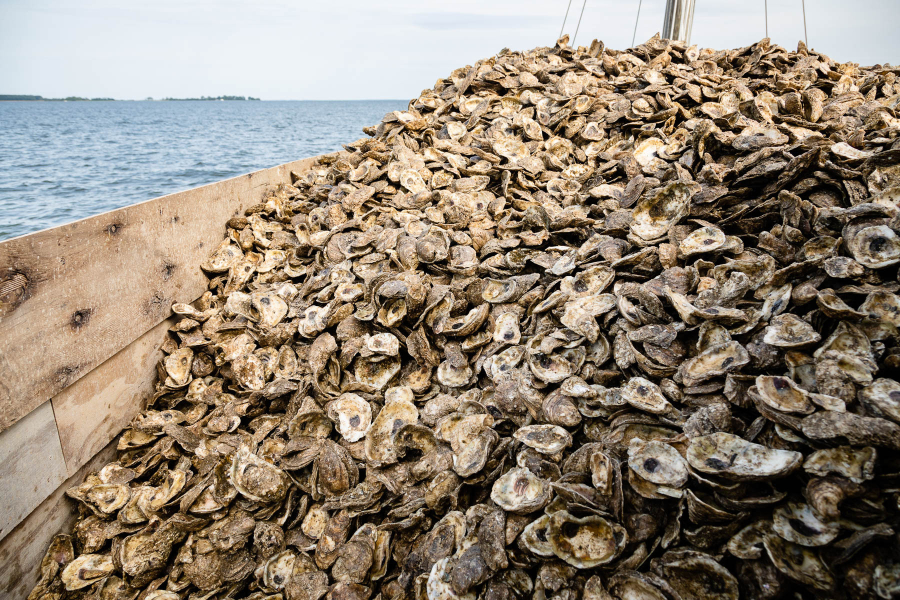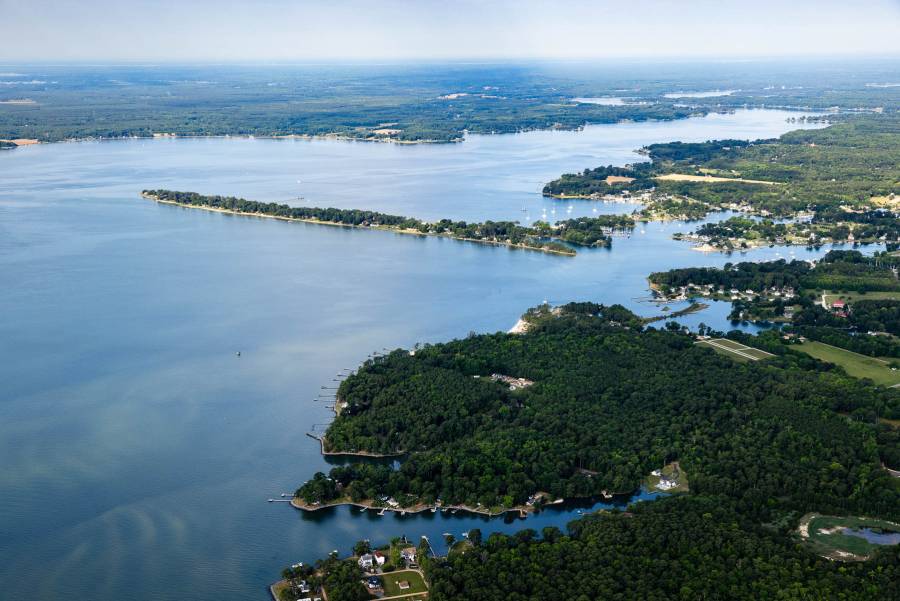Chesapeake Bay oyster reef restoration acreage surpasses two square miles
2,300 acres of oyster habitat are set to be restored by 2025

Efforts to restore healthy oyster reefs in 10 Chesapeake Bay tributaries by 2025 are making significant progress. The work to restore more than 2,300 acres is the world’s largest oyster restoration project. Efforts have now surpassed two square miles of healthy oyster reef habitat—that’s more than 1,055 football fields of healthy reef habitat. Oyster reefs support the ecosystem—and the economy.
Oysters grow in reefs that provide habitat for many Chesapeake Bay species. For example, juvenile blue crabs and some fish like to hide from predators in between oysters. Other living resources like to spend time in and near oyster reefs, too. They often find food in those areas. That makes them good places for both commercial and recreational fishermen to make their harvest. And oysters are filter feeders, so they help clean the water as they eat.
But oyster populations in the Chesapeake Bay are much lower than they used to be. As a result of disease, overfishing, degraded water quality and other problems, only about 3% of the historic native oyster population remains. So that means the ecosystem and economic benefits oyster reefs provide have diminished, too.

In each tributary, scientists first evaluate where restoration would work best. They develop a “restoration plan” to guide the work, which can include building a reef base out of hard substrate and/or seeding an area with baby oysters (known as spat-on-shell). After the restoration work, we monitor the restoration areas to track their progress.
So far, seven of the 10 tributaries that were chosen for restoration work have been completed. Still remaining are the Manokin River in Maryland and the Lynnhaven and lower York rivers in Virginia. In-water restoration work in the lower York is almost done. The Virginia Marine Resources Commission plans to complete work in that river by the end of this year.
Restoration work has already been completed in Harris Creek and the Little Choptank, Tred Avon, and St. Mary’s rivers in Maryland and the Lafayette, Piankatank, and Great Wicomico rivers in Virginia. And a few years ago, Virginia decided to restore oysters in an additional river. The Eastern Branch of the Elizabeth River has been completed and is considered a “bonus” tributary!
The partners plan to finish restoring the 10 tributaries by 2025. Because 2025 is coming soon, they are already thinking about what comes next. Plans are still in the works, but future restoration will likely seek to incorporate elements of restoration, aquaculture and the wild oyster fishery.

Comments
There are no comments.
Thank you!
Your comment has been received. Before it can be published, the comment will be reviewed by our team to ensure it adheres with our rules of engagement.
Back to recent stories